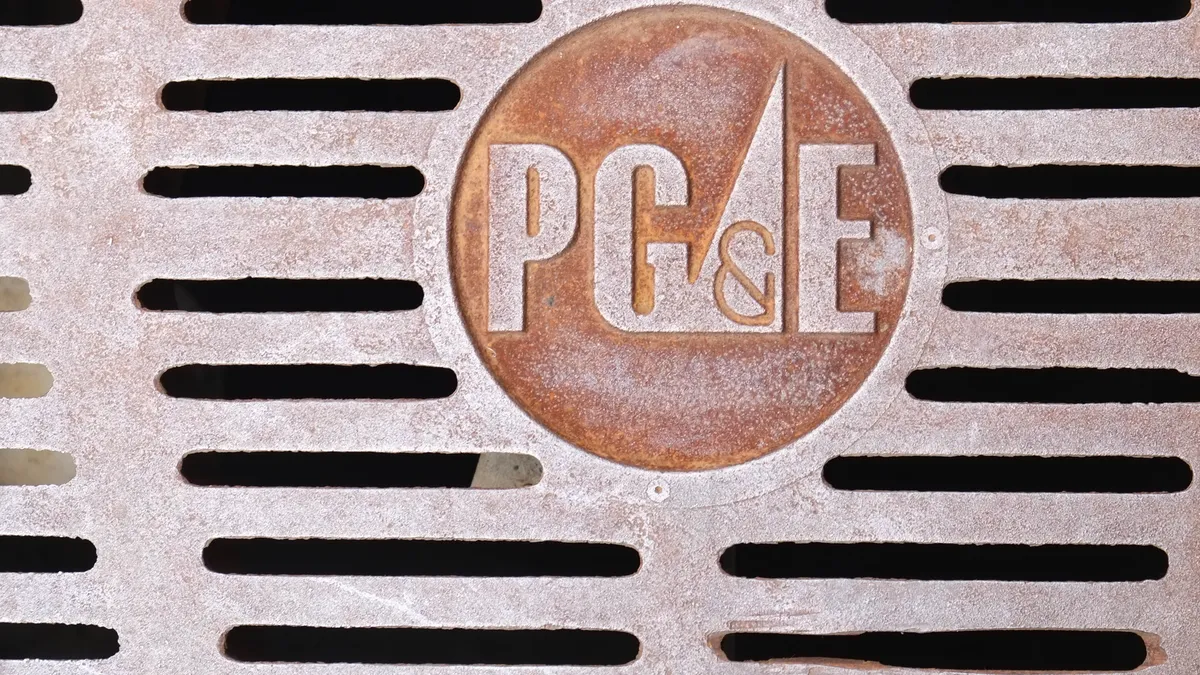Dive Brief:
- Splitting Pacific Gas & Electric into two separate utilities could make the delivery of energy safer, but it might also slow down California's aggressive environmental goals, according to the Sierra Club.
- In reply comments filed last week at the California Public Utilities Commission (CPUC), the environmental group said it was concerned that splitting PG&E into two independently operated gas and electric entities could have unintended consequences that prolong the state's use of natural gas.
- The CPUC is weighing a wide range of options to ensure PG&E operates safely, including possible new corporate structures and governance. At the same time, California has a statewide goal of carbon neutrality by 2045, and advocates want to remove any potential roadblocks.
Dive Insight:
There is some debate over whether a smaller PG&E — split into distinct electric and gas businesses — would be safer. But Sierra Club has raised concerns related to the state's environmental goals.
"There is a potential for a significant conflict between the business model of a new for profit gas company and the public interest in reducing carbon emissions," as well as the state's goal to be carbon-neutral by 2045, Sierra Club told regulators. "Separation of PG&E's gas business risks creating an entity singularly focused on opposing electrification to protect its bottom line regardless of the climate imperative."
There has been discussion of PG&E selling its gas delivery business, transitioning to a wires-only model or expanding publicly-owned service, such as community choice models. But Sierra Club is concerned separating the gas and electric divisions would not necessarily improve either safety or reliability, while potentially slowing the states efforts to decarbonize.
"In contrast to separated gas and electric utilities, a joint utility, with appropriate direction and a reorientation of incentives, can enable a less adversarial and more orderly transition to electric end uses," the group said.
The city and county of San Francisco appeared to disagree in their comments, and said regulators "should not continue to protect PG&E to ensure California's greenhouse gas targets can be met. Public entities already make a significant contribution to California's clean energy and greenhouse gas mandates."
Attorneys for San Francisco also noted that PG&E's performance "shows that size is not a determinant of success, especially when it comes to safety and service quality." The city and county are supportive of splitting PG&E into smaller entities.
The CPUC launched the investigation in December as it considers the possible role PG&E's electric system played in sparking some of California's recent wildfires. The utility has said it is "open to a range of solutions that will help make the energy system safer for the customers we serve," including new corporate structures.
Support for a smaller PG&E
There appears to be support, beyond the city and county of San Francisco, for breaking PG&E apart. But the utility is cautioning regulators against some of the proposals.
A group of Customer Choice Aggregations (CCAs) that includes Marin Clean Energy, Monterey Bay Community Power, East Bay Community Energy and others noted that the "common thread across party opening comments is that the status quo is untenable." They also told regulators their group is "uniquely situated to promote safer electricity service in California."
But The Utility Reform Network raised other concerns and urged regulators to "safeguard the continued existence of [a] fully regulated" provider of last resort. The advocacy group said it is reasonable to expect some customers would not be offered CCA or public utility service, or would opt out and require generation service from another entity.
"Under that scenario, TURN urges the commission to ensure that such service is provided on a fully regulated, cost of service basis," the group said. "These customers should be protected from unfair or unjustified prices, unclear or misleading marketing, and unfair terms of service."
TURN pointed to cases in Massachusetts, Illinois, Maryland and Connecticut where consumer advocates have raised concerns in the last year that residential retail electric supply markets have harmed consumers.The group has never been a fan of retail competition, and has declined to comment on the idea of splitting PG&E apart.
On the other hand, a February analysis from the Retail Energy Supply Association concluded electricity consumers in competitive retail markets have saved $300 billion over the past decade, compared with consumers in monopoly states.
PG&E, in its own reply comments, steered the commission toward some structural changes, but away from others.
"Legally separating the gas and electric businesses merits further study since it may increase operational focus on safety and be feasible from a technical perspective," the utility said. "Other proposals, however, seem disconnected from or even counterproductive to improving safety performance.
Transitioning to a wires-only model does not have a strong connection to safety, the utility said, and suggested that idea be considered out of scope. Smaller regionally-based entities could "create significant risks and costs, such as diverting safety resources away from higher-risk areas, de-averaging customer rates, and creating dis-synergies."















